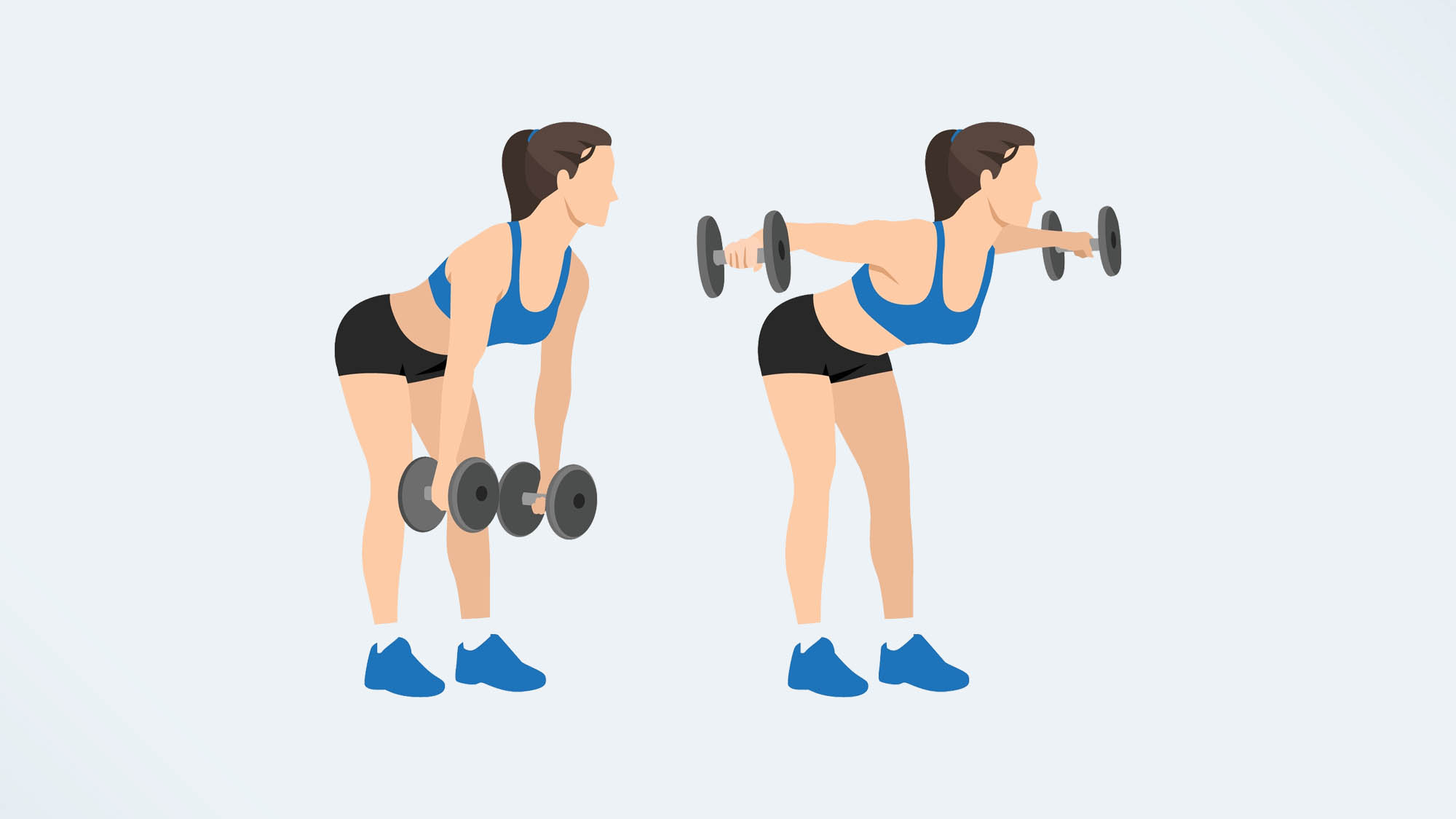
Want strong and stable shoulders? Whether you’ve just started working out or you’ve been a gym rat for years, the rear delt raise should definitely have a place in your exercise routine
Since the vast majority of us spend our days sitting in front of screens, many of the muscles in our posterior chain (aka, the back of our body) become weak and deconditioned. This includes the posterior or “rear” deltoids in the backs of our shoulders, and the rhomboids in between our shoulder blades.
When these muscles can’t provide stabilizing support to our upper extremities, our overall posture declines and our risk of injury increases. Rear delt raises target the rear deltoid and rhomboid muscles directly, forcing them to work against resistance and grow stronger in the process.
If improving posture and reducing injury risk aren’t enough to motivate you, consider this: including rear delt raises in your routine can help add a few pounds to both your bench and overhead presses.
Admittedly, I don’t perform rear delt raises enough — I usually focus on a variety of rows and assisted pull-ups instead. But since I’ve been feeling some nagging shoulder impingement while bench pressing (and my posture leaves a lot to be desired), I decided to add the rear delt raise to my workouts for a full week.
As always, listen to your body before beginning any new exercise or regimen — even though I performed the rear delt raise every day for seven days straight, a more sustainable practice would be to include them in two to three workouts per week.
How to do a rear delt raise
Before diving in, let’s review how to perform a rear delt raise:
- Select a light-to-moderately heavy pair of dumbbells and hold one in each hand (if you're still working out from home, shop the best adjustable dumbbells here). You’ll want to select a weight that allows you to do 8-12 repetitions with correct form.
- Stand with your feet hip width apart, hinge at the hip by aiming your tailbone behind you, and bring your chest and torso towards the floor at about a 45-degree angle.
- Brace your core and keep your spine neutral. Avoid any arching through the mid or lower back. Your knees should remain relaxed — not “locked out” or actively bent.
- Align your wrists directly underneath your shoulders, with your knuckles facing out to your sides. Roll your shoulders back and engage the muscles in the mid-back aiming the bottoms of your shoulder blades toward your hips.
- Keep your chin slightly tucked with your eyeline towards the floor, a few inches ahead of you.
- With your elbows relaxed and slightly bent, squeeze your shoulder blades together and slowly lift the dumbbells parallel to the floor.
- Keep your arms aligned slightly below the shoulder joint, engaging the muscles in the back of your shoulder and in between your shoulder blades.
- Slowly lower the weights back to the starting position with control

There are multiple ways to modify the rear delt raise, which can be especially helpful if you have any lower back or neck issues:
- Perform the rear delt raise seated by sitting on the edge of a chair or weight bench, pitching your torso forward with a neutral spine, and raising the dumbbells parallel to the floor. Lower the weights back to the starting position with control.
- The rear delt raise can also be performed lying face down on a weight bench. Incline the a bench at a 45 degree incline, lie facedown with a slight chin tuck, a neutral spine, your feet planted on the floor, and your forehead resting on the back of the bench. Raise the dumbbells parallel to the floor. Lower the weights back to the starting position with control.
- To perform the rear delt raise unilaterally (or one side at a time), pick up one dumbbell and place your other hand on the back of a chair, upright bench, or other stable surface. Hinge at the hips and bring your torso towards the floor at about a 45 degree angle. Raise the dumbbell parallel to the floor. Lower the weight back down to the starting position with control.
I did rear delt raises everyday for a week — here’s what happened
As a fan of upper body workout days, I was excited to devote a week’s worth of workout time towards perfecting the rear delt raise. My goal was to perform three sets of 10 repetitions for seven days straight. Here’s what happened:
At first, my neck started to hurt...
During the first few days of rear delt raises, I started to remember why I don’t do them that often — they tend to make the muscles in my neck tighten up.
My usual solution to this problem (for any exercise) is to lighten the weight, lower the reps, slow down my tempo, and really hone in on my form. But even these strategies didn’t take my overactive neck muscles out of the equation. So I looked for another solution.
...but that stopped once I modified my form
When two days of standard rear delt raise form proved to be a pain in the neck (literally), I decided to modify the exercise.
Kicking my ego aside, I braced myself against a weight bench and performed the rear delt raise one arm at a time. Before I picked up a dumbbell, I went through the motions of the exercise unweighted, focusing on contracting my rear delt and rhomboids throughout the movement. After a few reps like this, I picked up a light weight and finished my sets. Performing this modified version of the delt raise allowed me to use all the muscles I should and none of the ones I shouldn’t.
The takeaway? Don’t be afraid to modify — you’ll be able to reap more benefits from the exercise that way.
I was able to progress quickly
After three days of modified rear delt raises, I attempted to try the standard form again. This time I got through all three sets with no neck pain. Success!
By the end of the week, I was able to increase my dumbbell weight a bit which is always a nice feeling. Since I’d tried standard and modified versions of the exercise, I decided to go for a set of both seated rear delt raises and bench-supported rear delt raises. Of the two I preferred the seated rear delt raise — trying to position myself facedown on a bench always feels super awkward.
My posture improved
Whenever I think I’m standing up straight, I take a look in the mirror and realize my assessments are totally inaccurate. The biggest offense is my rounded shoulders, making the rear delt raise a much-needed addition to my usual routine.
I definitely noticed a difference in my posture after just a week — I was walking, standing, and sitting taller and feeling more supported through my chest, shoulders, and neck. And as an added bonus, the usual nagging shoulder pain I get during bench presses was markedly decreased.







